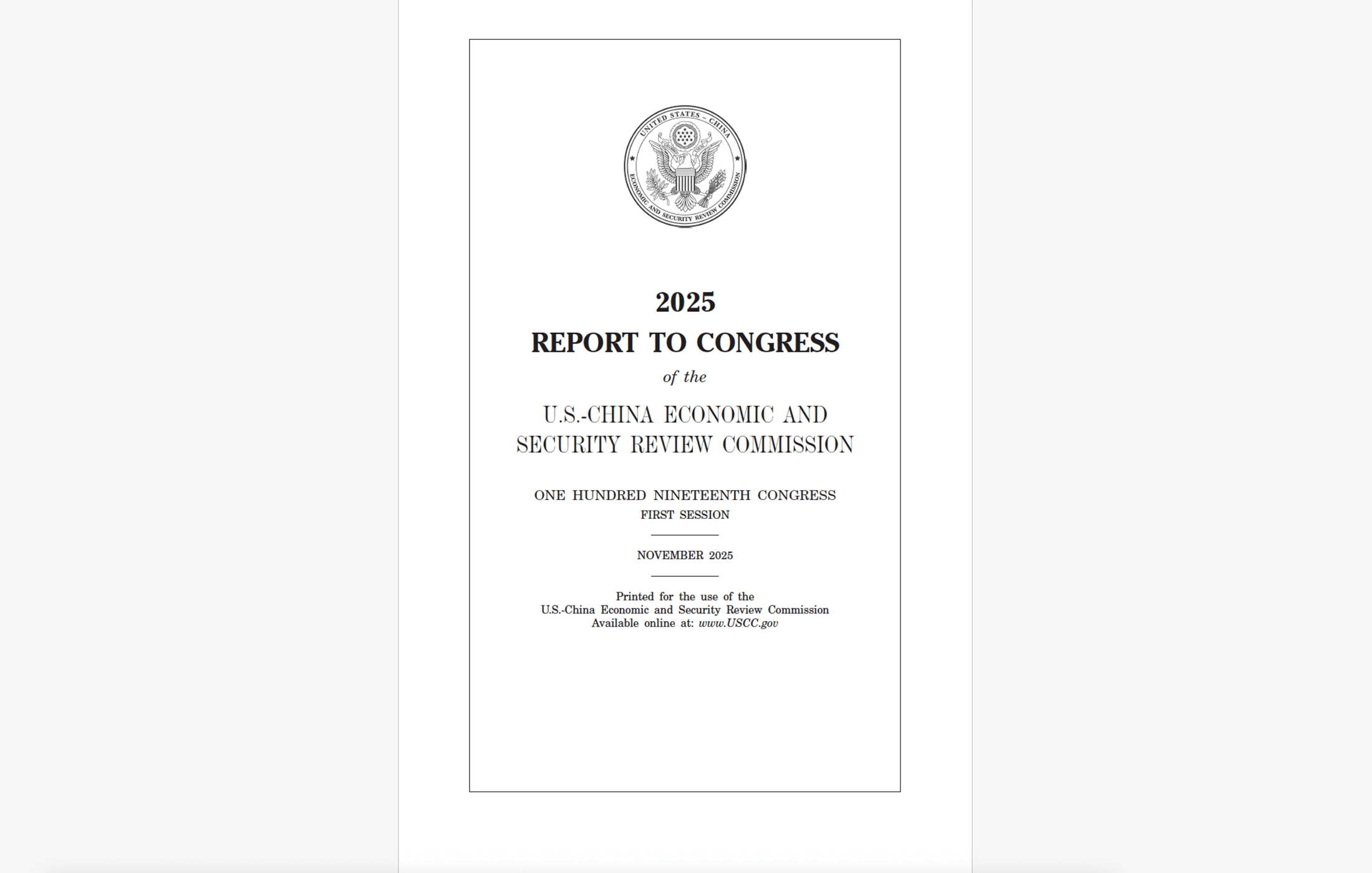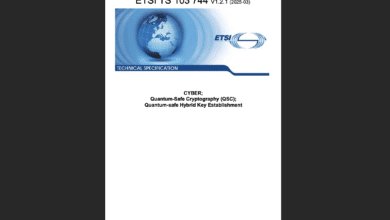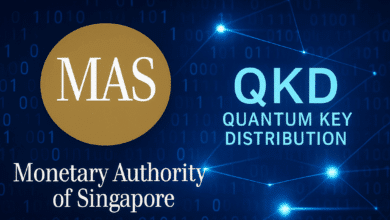U.S. Panel Urges a “Quantum First” Goal by 2030 to Outpace China

In a bid to secure the technological high ground, the U.S.-China Economic and Security Review Commission – a bipartisan federal advisory panel – has issued a bold recommendation: America should adopt a “Quantum First” national goal by 2030, arguing that the U.S. must secure early advantage in quantum computing, quantum communications and post-quantum security before rival powers can use the technology against U.S. interests.
This call, part of the Commission’s just-released 2025 Annual Report to Congress, centers on achieving quantum computational advantage in three mission-critical domains – cryptography, drug discovery, and materials science – by the end of the decade. In practical terms, the Commission warns that whoever leads in quantum (and AI) will “control the encryption of the digital economy; enable breakthroughs in materials, energy, and medicine; and gain asymmetric and likely persistent advantage in intelligence and targeting”. The stakes, in other words, are nothing short of future economic and national security dominance.
To reach a “Quantum First” posture by 2030, the Commission urges Congress to back its goal with serious investments and policy measures. Specifically, the panel recommends the following actions :
- Significantly increase federal funding for U.S. quantum development, with a focus on scalable quantum computing modalities, secure quantum communications, and accelerating the migration to post-quantum cryptography. This funding should go hand-in-hand with workforce initiatives – from expanded research fellowships to talent exchange programs with allies – to grow a quantum-ready labor force.
- Modernize and expand key research infrastructure, including cryogenic labs, quantum engineering centers, and next-generation fabrication and metrology facilities. Many existing U.S. quantum research environments are “under-resourced or technologically outdated”, the report notes, and upgrading them is vital to turn scientific breakthroughs into deployable technologies.
- Establish a Quantum Software Engineering Institute (QSEI) to develop the software foundations for scalable, secure, and interoperable quantum computing. Modeled on successful National AI Research Institutes, the proposed QSEI would coordinate open-source development and help build a trusted quantum software supply chain, ensuring U.S. quantum hardware is matched by “world-class software capabilities, enabling early operational advantage across science, industry, and defense”.
Underpinning these recommendations is a clear sense of urgency. The Commission argues that the “Quantum First 2030 timeline is essential to ensure the United States achieves quantum leadership before any adversary can leverage these capabilities against American interests”.
The report points squarely to China’s rapid advances: Beijing has “mobilized state‐scale investment and industrial coordination to dominate quantum systems and standards”, pouring resources into over-the-horizon technologies like quantum computing and quantum-secure communication. U.S. officials suspect that China is “actively racing to develop cryptographically relevant quantum computing” and may be concealing the extent of its progress. In such a race, the first-mover advantage could yield “irreversible strategic consequences, particularly given the vulnerability of current global systems that rely on public key cryptography”.
In plain terms: if an adversary like China gets quantum computing first (for instance, to crack today’s encryption), the damage to U.S. interests and global security could be profound and permanent.
Notably, the Commission’s focus on quantum comes alongside parallel concerns about applied AI and other emerging technologies. Throughout the report, quantum tech is framed not as an isolated science project but as part of a broader ecosystem of strategic technologies. In fact, the Commission explicitly links quantum and AI, emphasizing that leadership in these fields will define who sets the rules in the digital economy and the battlefield.
This aligns with a wider trend in Washington: the Pentagon recently narrowed its R&D priorities to six key areas, including “Applied Artificial Intelligence” and “Quantum and Battlefield Information Dominance (Q-BID)”. The Q-BID concept merges quantum technologies with advanced communication and sensing – underscoring that quantum-enabled secure comms and precision navigation will be as critical to information dominance as traditional radio and GPS.
In short, both the Commission and defense leaders see quantum computing, quantum communication, and post-quantum encryption as integral to the next generation of national security tech leadership. The 2025 report’s quantum recommendations sit within this larger context of ensuring the U.S. military and economy maintain a competitive edge in all the tech domains that matter, from AI algorithms to quantum bits.
Why “Quantum First” is Good News Globally
On a personal note, I find the Commission’s “Quantum First” push to be a positive signal not just for U.S. tech development, but for the world at large. Here’s why: when the United States sets an ambitious technology goal – especially one backed by significant funding and political will – it often has a cascading effect that raises the tide for global progress.
History offers plenty of examples of U.S. innovation drives sparking broader advances. In the quantum realm, we’ve already seen early moves like the U.S. National Quantum Initiative Act help spur other countries to formulate their own quantum programs. If Congress embraces a 2030 quantum advantage goal now, it could galvanize America’s allies and competitors alike to double down on quantum R&D. U.S. moves like this tend to inspire others to follow suit. For instance, Canada launched a National Quantum Strategy in 2023, shortly after the U.S., and Europe’s billion-euro Quantum Flagship has been matching strides in parallel.
A bold U.S. “Quantum First” agenda might encourage even more international collaboration – and healthy competition – in quantum science. The result? Potentially faster breakthroughs in quantum computing hardware, new drugs discovered via quantum chemistry, and more secure global communications networks fortified by post-quantum encryption. In the long run, accelerating the development of quantum technology benefits everyone, not just one country.
Crucially, the strategic framing of quantum tech within a defense and security context can help establish global norms and standards before the technology matures. By treating quantum capability as “mission-critical” and investing early, the U.S. is positioning itself to influence how quantum tools are used responsibly. A concerted effort to roll out post-quantum cryptography (PQC), for example, will set a benchmark for other nations to protect their critical infrastructure.
The Commission’s report highlights that current worldwide systems (think banking, energy, internet traffic) are vulnerable because they rely on legacy public-key crypto. Leading by example in transitioning to quantum-resistant encryption protocols could push international bodies and industries to adopt these standards more swiftly, making the global digital ecosystem safer against future quantum threats. We’re already seeing this with NIST’s PQC standards – largely a U.S.-led effort – which are poised to become de facto global standards. A U.S. commitment to fund and deploy such security at scale sends a message: it’s time for everyone to upgrade the locks on our digital doors.
Furthermore, by integrating quantum into its broader defense tech strategy (alongside AI, hypersonics, biotech, etc.), the U.S. sets an expectation of responsible innovation. It signals that quantum technology will be developed with an eye toward stability and norms, not just raw power. This can have a moderating influence internationally. If the U.S. treats quantum communications as a tool for secure diplomacy (and not just espionage), or quantum computing as a means to cure diseases and improve materials (and not just to crack enemy codes), it frames the narrative for other nations. I’m optimistic that a “Quantum First” initiative, despite being driven by great-power rivalry, can actually encourage a form of quantum détente – where all major players race to innovate but also tacitly agree on certain ethical guardrails (for instance, protecting global financial systems from quantum hacking).
When quantum tech is cast as part of a shared defense of economic security, it creates common ground for international cooperation even amid competition.
Admittedly, some might worry that this is just an arms race by another name. Indeed, the Commission’s language about beating adversaries to quantum supremacy has a cold-war echo. But as a long-time observer of tech policy, I see a constructive side: government urgency can translate to tangible support for researchers and startups, which in turn pushes the technology forward for all. The Commission’s recommendations for funding labs, building a QSEI, and training talent mean more open science, more cross-border collaboration (many quantum research teams are international), and more robust supply chains that everyone can rely on. And if Congress heeds the call to invest in quantum like it did with semiconductors (think CHIPS Act), we might even get a virtuous cycle where other countries expand their own investments to keep up. In the end, that broader investment boosts the entire field.
From a global perspective, having the U.S. champion quantum tech might also prevent any single actor from monopolizing it. The Commission clearly fears a scenario where China dominates quantum standards and infrastructure. By stepping up, the U.S. can help ensure a more multipolar quantum future, where no one country dictates the terms of critical technologies. That could lead to more interoperability, open standards, and shared benefits – much like the collaborative model that governed the early internet. We could see, for example, international agreements on quantum key distribution networks or joint efforts to maintain transparency about quantum advancements (to avoid dangerous secrecy or misunderstandings). Such norms will be easier to shape while the field is young.
In conclusion, the Commission’s “Quantum First” rallying cry is a wake-up call that appears well-justified by the report’s findings. It’s rare to see Washington explicitly tie together quantum computing, communications, and cryptography into a single national priority – and doing so by 2030 shows a refreshing sense of timeline urgency.
Quantum Upside & Quantum Risk - Handled
My company - Applied Quantum - helps governments, enterprises, and investors prepare for both the upside and the risk of quantum technologies. We deliver concise board and investor briefings; demystify quantum computing, sensing, and communications; craft national and corporate strategies to capture advantage; and turn plans into delivery. We help you mitigate the cquantum risk by executing crypto‑inventory, crypto‑agility implementation, PQC migration, and broader defenses against the quantum threat. We run vendor due diligence, proof‑of‑value pilots, standards and policy alignment, workforce training, and procurement support, then oversee implementation across your organization. Contact me if you want help.



